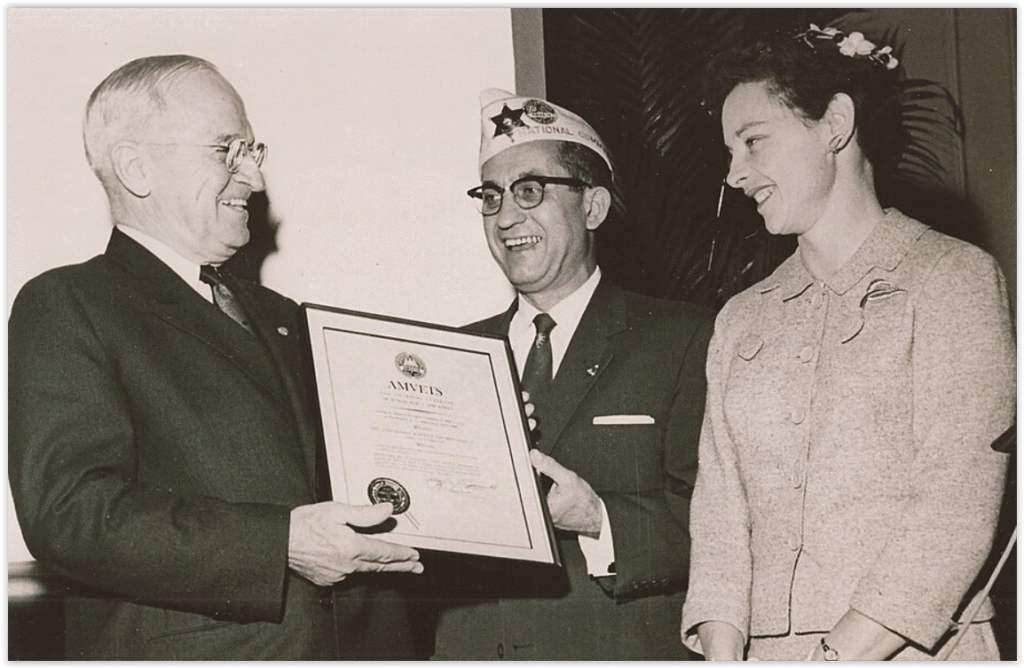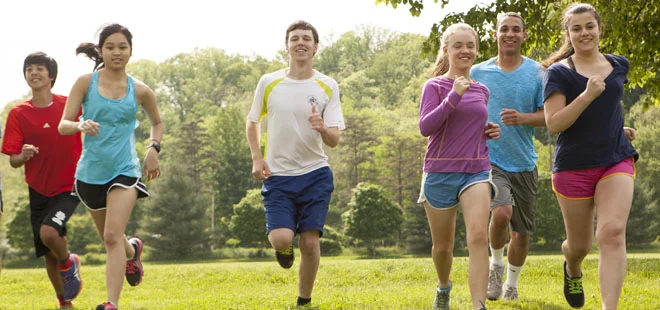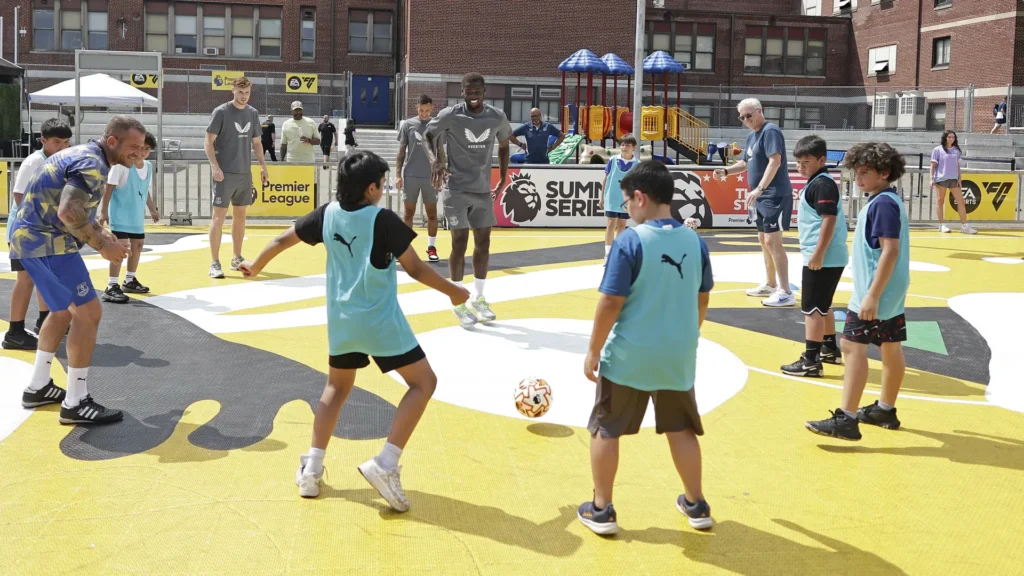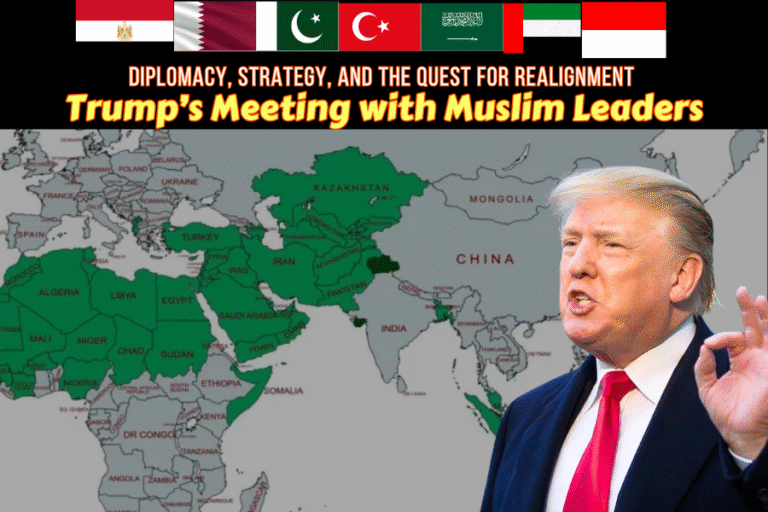(By Ayesha Mahnoor)
Introduction
On July 31, 2025, President Donald Trump announced the revival of the Presidential Fitness Test in U.S. public schools, reinstating a program phased out in 2013. This decision, formalized through an executive order, responds to a growing concern about declining youth fitness. For instance, today’s young people are less physically fit than their counterparts in the 1920s and 1940s, when robust health was critical during World Wars I and II and even into the late 20th century. Instead, over the past 25 years, youth have become increasingly glued to computer screens, shunning outdoor play. Military instructors at academies have noted that some cadets have never climbed a tree or swum across a stream in their teens, underscoring a generational fitness gap. Consequently, Trump’s move to restore the test, which includes exercises like the one-mile run and pull-ups, addresses a pressing need to promote physical health. Moreover, the executive order reestablishes the President’s Council on Sports, Fitness, and Nutrition, led by Health and Human Services Secretary Robert F. Kennedy Jr. This article explores the test’s history, revival details, implications for education and public health, lessons for countries like Pakistan, and future prospects.
Historical Context
The Presidential Fitness Test originated in the 1950s, driven by Cold War anxieties about American youth fitness. Specifically, a 1953 study by Dr. Hans Kraus and Bonnie Prudden found that 58% of U.S. children failed a basic fitness test, compared to 8% of European children. For example, the Kraus-Weber test focused on core strength and flexibility. Alarmed, President Dwight Eisenhower created the President’s Council on Youth Fitness in 1956, with Vice President Richard Nixon as chair. Consequently, the test evolved into a national program by 1966 under President Lyndon B. Johnson, rewarding top performers with the Presidential Physical Fitness Award.

However, the test’s military-style exercises, like pull-ups and shuttle runs, drew criticism. For instance, educators argued they prioritized athleticism over holistic health. In 2012, President Barack Obama replaced it with the Presidential Youth Fitness Program (PYFP), emphasizing health-based assessments like the FitnessGram. Moreover, critics noted the test’s high failure rates fostered embarrassment, with one SBNation commenter recalling being “the slowest person to run a mile” in fourth grade. Thus, the test’s history reflects a tension between competitive fitness and inclusive health promotion.

Details of the Revival
Trump’s executive order, signed on July 31, 2025, reinstates the Presidential Fitness Test and the President’s Council. Specifically, it directs the council to develop school programs rewarding “excellence in physical education” and establish criteria for a new Presidential Fitness Award. For example, the test will include classic components: a one-mile run, pull-ups or push-ups, sit-ups, a sit-and-reach, and a shuttle run. Health and Human Services Secretary Robert F. Kennedy Jr. will administer the program, leveraging his health advocacy background.
The announcement, attended by athletes like golfer Bryson DeChambeau and wrestler Paul “Triple H” Levesque, ties the revival to Trump’s sports agenda. For instance, DeChambeau will chair the council, reflecting Trump’s focus on high-profile sporting events like the 2025 Ryder Cup and 2028 Olympics. White House press secretary Karoline Leavitt stated, “President Trump wants every young American to have the opportunity to emphasize healthy, active lifestyles—creating a culture of strength and excellence.” However, details on implementation, funding, and timelines remain unclear.
Implications for Education and Public Health
The revival has significant implications for U.S. education and public health. For instance, it aligns with Trump’s goal to promote physical strength, addressing concerns about declining youth fitness. A 2025 study cited by Axios noted a 17-year decline in children’s health, with rising obesity rates. Consequently, reinstating the test could encourage physical activity, potentially improving academic performance, as studies link exercise to better concentration.

However, the test’s competitive focus may clash with modern educational trends. For example, the PYFP emphasized individual health over percentiles, reducing comparisons. Critics argue the revived test could shame less athletic students, as SBNation accounts highlight traumatic experiences. Moreover, its administration under Kennedy, a controversial figure, raises questions about execution. Thus, the revival seeks to foster fitness but risks alienating some students.
From a governance perspective, the executive order operates within the President’s authority to influence education policy. Specifically, the Department of Health and Human Services can set guidelines, but implementation depends on state and local education agencies. For instance, schools may face challenges integrating the test into curricula without federal funding, as the PYFP offered free resources. Consequently, the revival reflects Trump’s use of executive power to prioritize cultural and health initiatives.

Challenges and Criticisms
Several challenges could hinder the revival’s success. For instance, the test’s competitive design may not suit all students. A 1989 study by Seefeldt and Vogel criticized fitness tests for focusing on performance over lifelong health habits. Moreover, physical educators argue for holistic approaches, like walking, to foster positive exercise relationships. The test’s return could exacerbate unhealthy attitudes, as one teacher noted it created “unhealthy relationships with exercise.”
Legally, the revival faces no direct barriers, as education is state-controlled, but compliance may vary. For example, some states may resist due to costs or ideological differences. Additionally, Kennedy’s involvement raises concerns, given his vaccine skepticism. Critics, like those on Substack, question the test’s validity as a fitness measure, citing its failure to address structural issues like safe play spaces. Furthermore, the lack of clear funding or training plans could strain schools.
Lessons for Third World Countries
The revival of the Presidential Fitness Test offers valuable lessons for third world countries like Pakistan, where youth fitness is also declining due to urbanization and screen time. For instance, Pakistan’s obesity rates among adolescents have risen, with a 2024 study reporting 15% prevalence in urban areas. Consequently, adopting a similar fitness program could promote health and discipline. For example, structured tests could prepare youth for physically demanding roles, like military service, where fitness gaps are evident. Moreover, physical education fosters teamwork and resilience, qualities essential for nation-building. However, Pakistan’s resource constraints, such as limited school facilities, pose challenges. A tailored approach, emphasizing low-cost activities like running, could maximize benefits. Thus, following the U.S. model could strengthen Pakistan’s youth, but local adaptation is key.

Future Outlook
The revival’s success depends on implementation and public reception. For instance, clear guidelines and teacher training could ensure effective delivery. Moreover, incorporating modern health metrics, like the beep test, could balance competition with inclusivity. However, resistance from educators favoring holistic programs may persist. For example, the PYFP’s resources, like online training, were widely adopted, while the Fitness Test’s rigid standards were not.
Geopolitically, the revival aligns with Trump’s “America First” agenda, emphasizing national strength. For instance, hosting the 2028 Olympics underscores his focus on physical excellence. However, addressing critics’ concerns about student well-being will be crucial. A balanced approach, blending competition with health education, could bridge divides. Ultimately, the test’s return could inspire a new generation or reignite old debates.
Conclusion
President Trump’s revival of the Presidential Fitness Test on July 31, 2025, marks a bold return to competitive physical education. By reinstating a program rooted in Cold War concerns, it aims to promote strength and health. However, its competitive nature and vague implementation plans raise concerns. For instance, balancing excellence with inclusivity will be key. As schools navigate this change, the revival underscores Trump’s use of governance to shape cultural priorities. Thus, its impact will depend on careful execution and public support.







